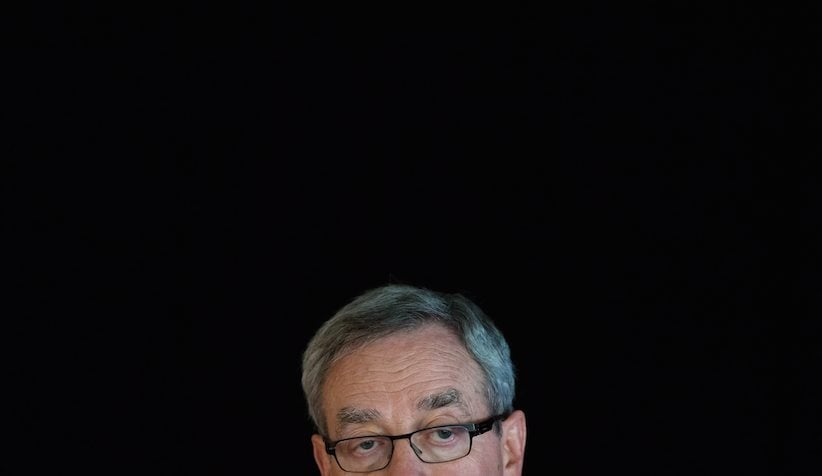Why Canada should embrace budget deficits right now
Slashing spending to avoid a deficit when the economy is so weak makes no sense
Finance Minister Joe Oliver addresses the Australia-Canada Economic Leadership Forum in Vancouver, B.C., on Tuesday July 7, 2015. THE CANADIAN PRESS/Darryl Dyck
Share

Between four straight months of falling GDP and record trade deficits, the economic news coming out of Canada over the last few months has been rather grim. The slowing economy has all but certainly pushed the federal government into deficit position. Given the weak state of the economy, a budgetary deficit should be embraced, not feared.
Budget 2015 left very little margin for error, when it came to balancing the books, with a projected surplus of $1.4 billion, plus an additional $1 billion as a contingency reserve, giving the federal government $2.4 billion in wiggle room. Ironically, the contingency reserve was slashed by two-thirds on the grounds of reduced downside risk to the economy; given the current state of the economy, this projection may one day make a list of shockingly bad predictions.
Chapter 5.2 of the budget provides a helpful analysis of the effect that economic shocks have on the federal government’s books, through the following three economic indicators:
- “A one-year, one-percentage-point decrease in real GDP growth” reduces the budgetary balance by $4.1 billion.
- “A decrease in nominal GDP growth resulting solely from a one-year, one-percentage-point decrease in the rate of GDP inflation” reduces the budgetary balance by $1.9 billion.
- “A sustained 100-basis-point increase in all interest rates” reduces the budgetary balance by $0.5 billion.
Page 60 of the budget gives forecasts of two per cent GDP growth, -0.4 per cent for GDP inflation, and 0.60 per cent for the three-month T-Bill rate for 2015. Given the recent economic news, estimates of 1.2 per cent for GDP growth, -0.2 per cent for GDP inflation, and 0.55 per cent for the three-month T-Bill rate are more appropriate. These changes have the following effect on the government’s budgetary balance:
- Reduction in the GDP growth rate from two per cent to 1.2 per cent reduces the budgetary balance by $3.28 billion.
- Increase in GDP inflation from -0.4 per cent to -0.2 per cent increases the budgetary balance by $0.38 billion.
- Reduction in the three-month T-Bill rate from 0.60 per cent to 0.55 per cent increases the budgetary balance by $0.03 billion.
Put it all together, and the budgetary outlook has declined by approximately $2.87 billion, exceeding the entire budgetary cushion by a few hundred million dollars.
Running a budget deficit is certainly appropriate, given the current economic situation. Canada’s new Federal Balanced Budget Act allows for budgetary deficits when a recession “has occurred, is occurring or is forecast”—a condition met by TD’s recession projections.
Despite the slowdown in the economy, the Finance minister has still committed to a $1.4-billion surplus. The government could still hit its surplus if it so chooses, by deferring planned spending into future years. This would go against all economic logic, however, as the government should be putting additional money into a weakening economy, not taking it out. Tightening fiscal policy during a slowdown to meet an arbitrary budgetary target is completely counterproductive.
Let us make no mistake about it: Canada is running a deficit, and it is entirely appropriate for it to do so, given the state of the economy.